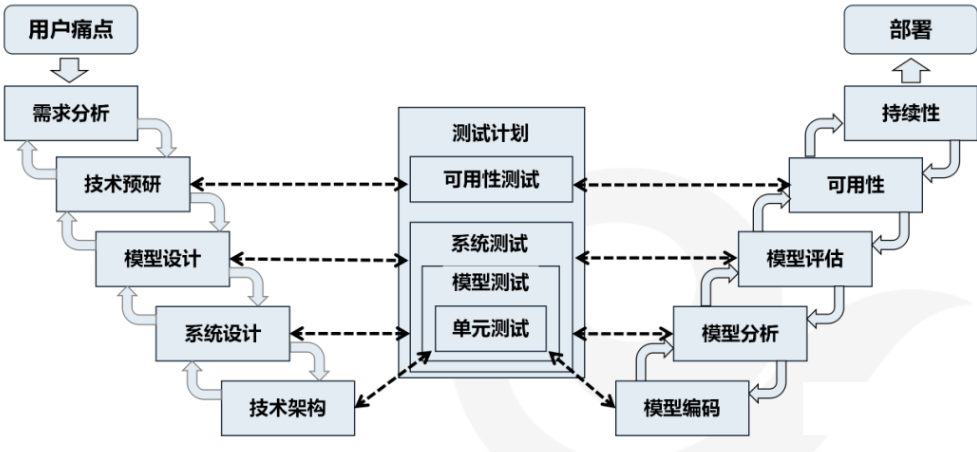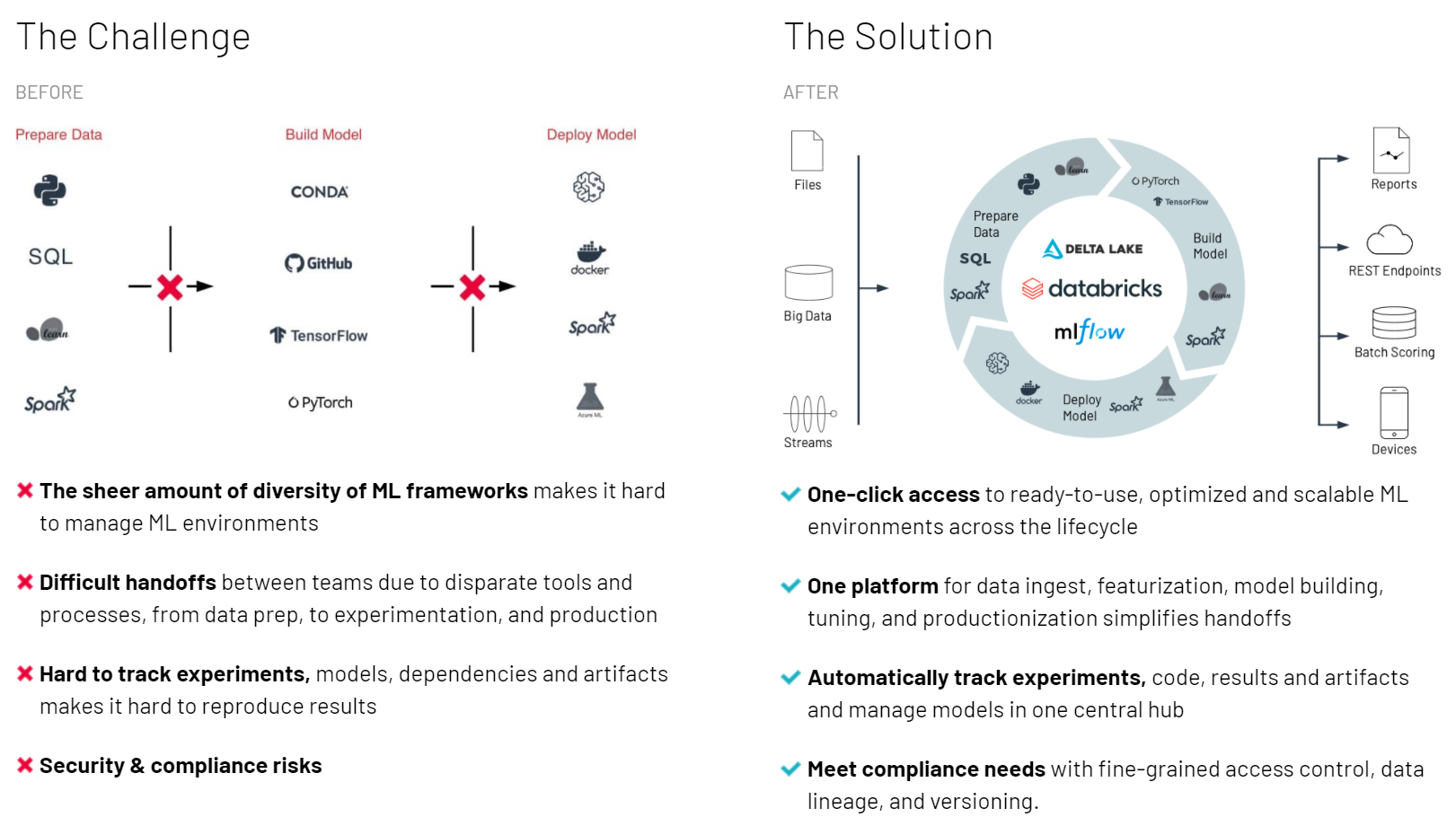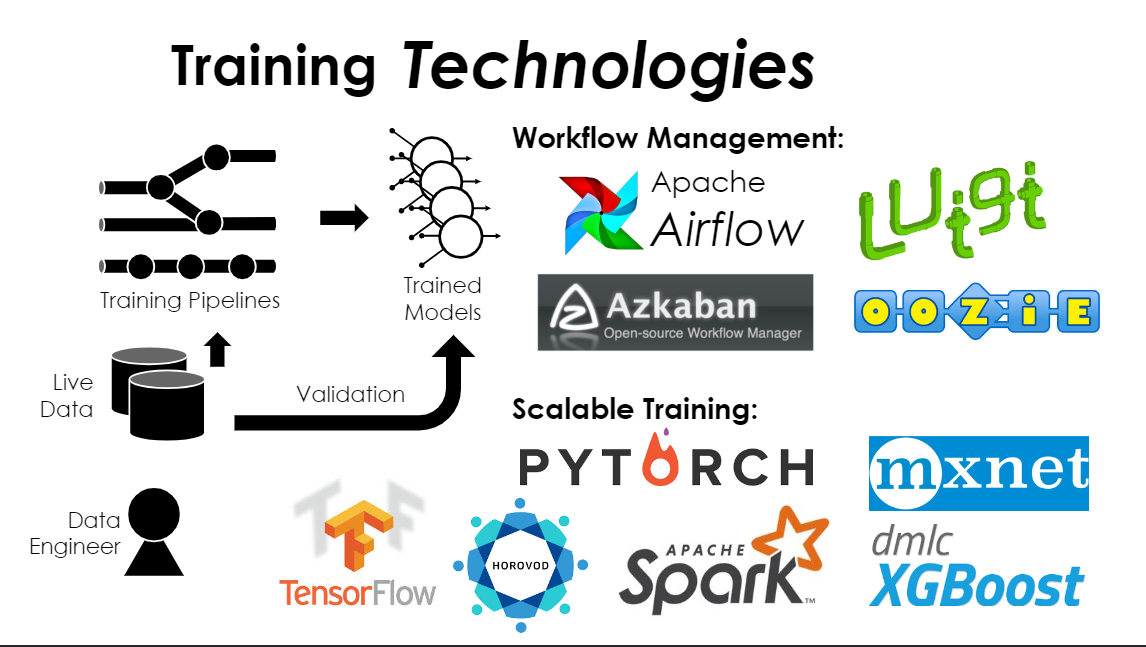5.9. 模型过程¶
5.9.3. 模型开发¶
数据采集-》数据清理&可视化
需要数据工程师来帮助:
识别数据的潜在来源
从多个来源连接数据
定位缺失值和异常值
绘制趋势以识别异常
—》特征工程&模型设计-》训练&评估
数据科学家为此而生:
构建信息丰富的特性
功能设计新的模型架构
重新调整超参数
验证预测准确性
5.9.3.1. 特征和特征工程¶
特征:输入的属性或特征
为什么从模型开发中直接生成训练有素的模型是一个坏主意
为了解决新问题,正在构建模型
需要跟踪组合和验证端到端的准确性。
需要对模型进行单元和集成测试
TODO:
Dynamic Features: features can often be modified faster than models:
Useful for addressing fast changing dynamics (e.g., user preferences can be encoded in click history features).
Issue:resulting potential covariate shift can be problematic
5.9.4. 推断¶
目的:在深度神经复杂的突发运行下在~10ms内进行预测
5.9.4.1. 并包括反馈¶
模型更新:当新数据来重新培训。
周期性:权衡利用批处理和验证。因为模型可能会过期一段时间。
持续地(在线学习):最新鲜的模型。需要验证,学习率?…非常复杂。
特征更新:新数据可能会改变特征
例如:更新用户的点击历史-》新预测
比在线学习更健壮
新的训练数据到达并改变损失面。而不是从以前的解的随机权重开始重新开始
5.9.4.2. 反馈圈¶
Models can bias the data they collect
Example: content recommendation
Future models may reflect earlier model bias
Exploration –Exploitation Trade-off
Exploration:observe diverse outcomes
Exploitation:leverage model to takepredicted best action
Solutions:
Randomization (ε-greedy): occasionally ignore the model
Bandit Algorithms/Thompson Sampling: optimally balance exploration and exploitation àactive area of research



